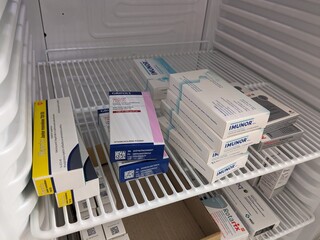
Understanding Gamma Globulin: Uses, Diseases Treated, and Administration
Gamma globulin, also known as immunoglobulin, plays a vital role in the immune system by providing passive immunity to patients who need it. It is a preparation of antibodies derived from pooled human plasma, designed to boost or modify the immune response. This powerful therapeutic agent has been used for decades to treat various immune-related diseases and conditions.
What Is Gamma Globulin?
Gamma globulin is a fraction of plasma proteins rich in antibodies, specifically immunoglobulins (IgG). These antibodies help the body fight off infections by identifying and neutralizing bacteria, viruses, and other harmful pathogens. Because gamma globulin provides passive immunity, it is especially helpful in patients whose immune systems are compromised or unable to produce adequate antibodies.
Diseases Treated with Gamma Globulin
Gamma globulin therapy is used for several clinical indications, including:
- Primary Immunodeficiency Diseases (PIDD): Patients with congenital or acquired immune deficiencies who cannot produce enough antibodies.
- Infectious Diseases: Such as hepatitis A and measles, especially in exposure prophylaxis or outbreak control.
- Autoimmune Disorders: Conditions like immune thrombocytopenic purpura (ITP), Guillain-Barré syndrome, and Kawasaki disease, where gamma globulin modulates immune system activity.
- Post-Exposure Prophylaxis: For individuals exposed to certain infections such as rabies or cytomegalovirus (CMV) to provide immediate protection.
The versatility of gamma globulin in both immune deficiency and autoimmune diseases makes it a critical therapy in many healthcare settings.
How Is Gamma Globulin Administered?
Gamma globulin is typically administered through two main routes:
- Intravenous (IVIG): Given directly into the bloodstream via an IV infusion. This method allows rapid delivery of antibodies and is often used in hospital or clinical settings.
- Subcutaneous (SCIG): Injected under the skin, usually in the abdomen or thigh. This method can be done at home with training, offering patients greater convenience and steady antibody levels.
The dosage and frequency depend on the patient’s condition, weight, and response to therapy. Healthcare providers carefully monitor patients for adverse reactions, which can include headache, fever, chills, or allergic responses.
Why Continuing Education on Gamma Globulin Matters
For healthcare professionals, especially nurses and clinicians involved in immunotherapy, understanding the indications, administration techniques, and monitoring of gamma globulin is crucial for patient safety and effective treatment outcomes.
If you want to deepen your knowledge of gamma globulin and stay current with best practices, Pedagogy Education offers a comprehensive online course titled All About Gamma Globulin. This course covers everything from the basics of immunoglobulin therapy to clinical applications and nursing considerations.
You can explore and enroll in the course here:
https://pedagogyeducation.com/Courses/All-About-Gamma-Globulin
References
- Stiehm, E. R. (2007). Immunoglobulin Therapy. Elsevier.
- Orange, J. S., Hossny, E. M., Weiler, C. R., et al. (2006). Use of intravenous immunoglobulin in human disease: A review of evidence by members of the Primary Immunodeficiency Committee of the American Academy of Allergy, Asthma and Immunology. The Journal of Allergy and Clinical Immunology, 117(4), S525-S553.
- Berger, M. (2013). Subcutaneous immunoglobulin replacement therapy. Immunology and Allergy Clinics of North America, 33(3), 539–557.
- Centers for Disease Control and Prevention (CDC). (2021). Use of Immunoglobulin in Infectious Diseases. https://www.cdc.gov
- National Institutes of Health (NIH). (2020). Immune Thrombocytopenic Purpura. https://www.nih.gov

